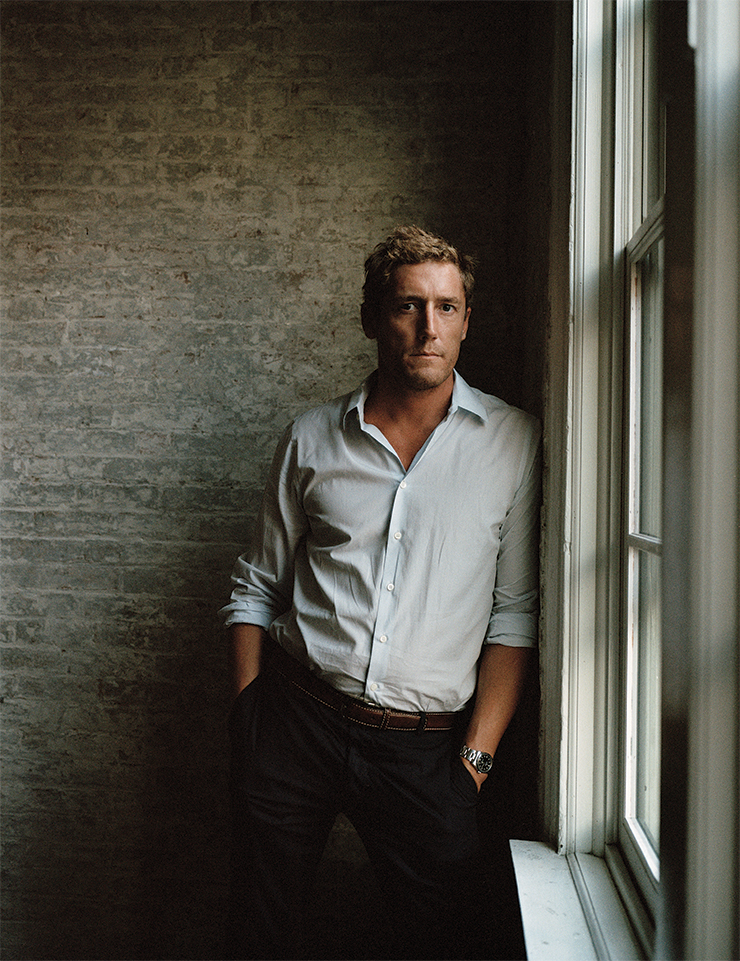
In a Manhattan conference room strewn with Tonys, Palme d’Ors and other trophies from his first production company, ithuggler, Patrick Milling-Smith declared that virtual reality, known as VR, is the only medium people are choosing to engage with nowadays. “They’re totally immersed in it and there’s no second screen distraction; you’re not picking up your phone like most people are when they watch TV or film,” he says.
Milling-Smith isn’t alone in his assessment. In 2014, Facebook bought the VR company Oculus for $2 billion and the company’s CEO, Mark Zuckerberg, hailed VR as “the next major computing and communications platform.” Milling-Smith says consumer-side products today are “pretty great,” noting the Samsung Gear, Google Daydream, HTC Vive and Oculus Rift. “Millions and millions of people are adopting the hardware,” he says. What’s needed, however, for VR to flourish, according to Milling-Smith, is must-see content.
Alongside the famed music video director Chris Milk, who is also the co-founder of the production studio Here Be Dragons, Milling-Smith aspires to develop a language of cinema and storytelling for VR. So far, results have been strong. Last year, they won a top award at Cannes for a New York Times VR film about international child refugees. They have also partnered with with some of the biggest names in original storytelling, such as the Oscar-winning director Kathryn Bigelow and immersive theater innovator Felix Barrett. Documentary filmmaker David Gelb, who created Netflix’s Chef’s Table, directed Here Be Dragon’s first episodic VR series, The Possible, which premiered in January on Within, Dragon’s distribution app.
With film, even after the technology was understood, “it took artists to come in and start experimenting with the medium to develop what we know now as the language of cinema, and that took decades,” Milling-Smith recalled. “We want to speed that up a little bit.”
And the best way, he suggests, “is to have very demanding talent that has an idea in their head, and we just have to work out how to do it.”
Milk, who created pioneering videos for stars like Kanye West, U2 and Arcade Fire, is a prime example of such visionary talent. Here Be Dragons is also working with provocative video artist Jordan Wolfson, Milling-Smith revealed. “He’s really pushed things, like he does.”
But, “It’s brands that are propelling this medium forward,” Milling-Smith explains. The firm’s commercial clients include Samsung, Facebook and Universal Studios. “We are not making ads in VR,” Milling-Smith says. “We’re very strong on that. We create branded experiences…. if you’re too aggressive with the sale, it will be rejected. If you give somebody a meaningful, moving experience, they’re grateful to that brand.”
Milling-Smith’s primary consideration is whether a project has a fulfilling, stand-alone story. With that in mind, Milling-Smith and Milk have collaborated with the United Nations, and non-profits such as Conservation International and the Shoah Foundation, in producing VR documentaries, to help stir up empathy and boost donations.
“We’ve been all around the world, to Africa, Pakistan, Nepal, Gaza, Syria…” Milling-Smith recounts. “We’re doing a series now about environmentalists and activists which takes you to Antarctica and the desert—all over the planet to some of the harshest places, witnessing things that won’t be there in a year and will never be there again.”
Milk did a TED talk on this. He came up with a description of VR as the ultimate empathy machine. “You’re hard pressed in traditional 16 by 9 film to get the same emotional impact,” Milling-Smith elaborates. “Documentary is the most natural genre for it. You’re feeling like you’re there; you’re walking in someone else’s shoes.”
To create in VR, Here Be Dragons has its own tech team that builds camera rigs and tools to take the place of traditional film equipment, which didn’t work for VR. “When we first started, the best practices for filming in VR were to put a camera rig in the middle of a room and walk slowly around it. Within months, we were putting it on a bicycle, then on a helicopter” he says. “We have a great reverence for technology, but we have a real love for story and emotion.”
That passion for narrative and enchantment explains the young firm’s name. “Here Be Dragons” was the expression found on old maps to describe uncharted territory and the fantastic possibilities such terrain held. “Our conversation,” Milling-Smith recalled of his founding talks with Milk, was around the question: “how can we move this medium to a real storytelling medium rather than just a fun piece of technology? The idea came about of let’s build a studio—a collective of talent—and let that talent innovate, ideate and explore.
There’s still no “defined language in VR,” Milling-Smith says, “so, everything we do is pushing things a little bit further, and sometimes too far, and other times not far enough.” But, he says, “we’re now in a very different position to where we were a year ago, and where we were a year before that, of knowing the possibilities of the medium.”










 in your life?
in your life?

